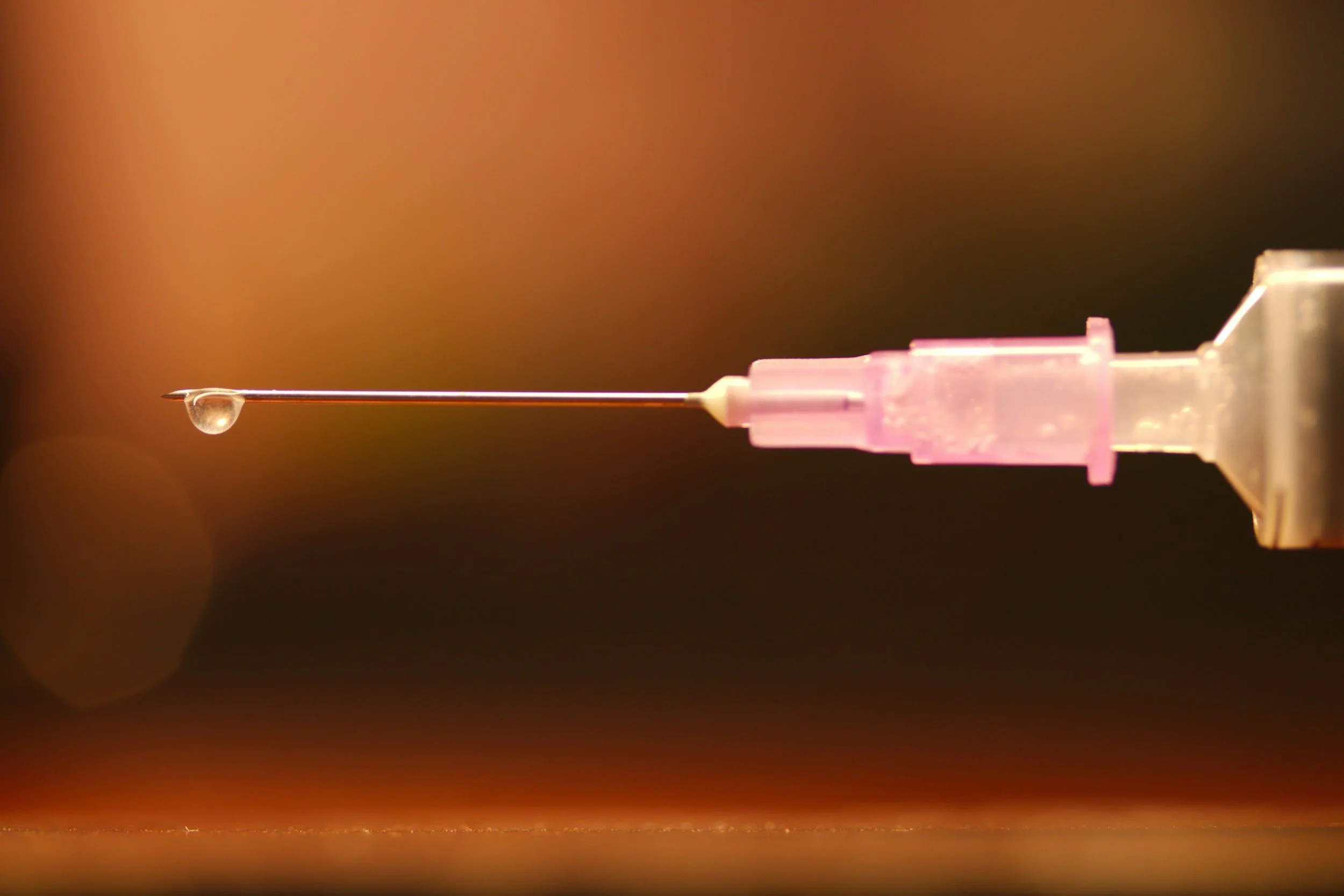Microneedling 101: Understanding the difference between Clinical, Infusions & At-Home Treatments
Microneedling Explained: Clinical Microneedling vs. Microneedling Infusions vs. At-Home Microneedling
Microneedling has become a popular skin treatment for its ability to stimulate collagen production, improve skin texture, and address concerns like acne scars, fine lines, and hyperpigmentation. However, not all microneedling treatments are created equal. Let’s explore the key differences between clinical microneedling, microneedling infusions, and at-home microneedling so you can make the best choice for your skin.
Clinical Microneedling
Clinical microneedling, also known as medical or professional microneedling, is performed by a licensed esthetician or medical professional using a professional-grade microneedling device. This treatment penetrates deeper into the skin (typically 0.5mm to 2.5mm) to create controlled micro-injuries, triggering collagen and elastin production for effective skin rejuvenation.
Benefits:
✔ Stimulates Collagen Production – Helps with skin tightening and anti-aging. ✔ Treats Acne Scars & Hyperpigmentation – Improves skin tone and reduces discoloration. ✔ Improves Fine Lines & Wrinkles – Reduces signs of aging and enhances skin elasticity. ✔ Customizable & Safe – Performed by a trained professional to suit your skin’s unique needs. ✔ Medical-Grade Equipment – Ensures deeper penetration and more effective results compared to at-home rollers. ✔ Includes Numbing for Comfort – A topical numbing cream is applied before the procedure to minimize discomfort.
Limitations:
⚠ Requires Recovery Time – Mild redness and sensitivity may occur for 24–48 hours as the skin heals.
Best For:
Deep acne scars and hyperpigmentation
Advanced anti-aging treatments
Skin rejuvenation and collagen production
Microneedling Infusions
Microneedling infusions combine traditional microneedling with the application of targeted serums, such as hyaluronic acid, peptides, growth factors or peel actives. The microchannels created during the treatment allow these products to penetrate deeply, enhancing their effectiveness and providing added skin benefits. These treatments typically use needles ranging from 0.25mm to 1.0mm in depth, do not require numbing, and involve little to no post-procedure recovery time.
Benefits:
✔ Enhances Hydration & Brightening – Infusions with hyaluronic acid, peptides, growth factors or peel actives boost moisture and radiance. ✔ Speeds Up Healing & Repair – Peptides and growth factors accelerate skin regeneration. ✔ Targets Specific Skin Concerns – Can be customized to treat pigmentation, fine lines, or dullness. ✔ Deeper Product Absorption – Ensures serums reach deeper layers of the skin for better results. ✔ No Numbing Needed – Comfortable treatment with minimal downtime. ✔ Little to No Post-Procedure Recovery – Skin may appear slightly flushed but returns to normal quickly.
Limitations:
⚠ Less Effective for Deep Concerns – Does not significantly impact deep wrinkles, scars, or severe hyperpigmentation. ⚠ Does Not Induce Collagen – Primarily enhances product absorption rather than triggering collagen production.
Best For:
Dull or dehydrated skin
Pigmentation concerns
Maximizing the benefits of serums
At-Home Microneedling
At-home microneedling typically involves using a dermaroller or microneedling pen with much shorter needles (0.2mm to 0.5mm) compared to professional treatments. While these tools can enhance product absorption and provide mild skin benefits, they do not penetrate deeply enough to trigger significant collagen production. It is essential to use at-home microneedling devices hygienically and carefully to avoid irritation or infection.
Benefits:
✔ Enhances Skincare Routine – Improves absorption of serums and moisturizers. ✔ Mild Skin Smoothing – Can help with minor texture issues over time. ✔ Convenient & Cost-Effective – Can be done at home between professional treatments.
Limitations:
⚠ Less Effective for Deep Concerns – Does not significantly impact deep wrinkles, scars, or severe hyperpigmentation. ⚠ Higher Risk of Improper Use – Requires strict hygiene to prevent infections or skin damage. ⚠ Results Take Longer – Noticeable changes require consistent use over time. ⚠ Potential for Skin Barrier Damage – Overuse or improper technique can lead to irritation and compromised skin health.
Alternative At-Home Option: Nano-Needling
For those looking for a gentler at-home alternative, nano-needling is a great option. Nano-needling uses much smaller needle tips that only affect the outermost layer of the skin, improving product absorption without creating micro-injuries. It is safer for home use, requires no downtime, and provides an effective way to enhance skincare results.
Best For:
Enhancing skincare product absorption
Mild texture improvements
Maintenance between professional treatments
Which Microneedling Treatment is Right for You?
If you’re looking for dramatic skin improvement and long-term results, clinical microneedling is the best option. For hydration and targeted skin concerns, microneedling infusions provide enhanced benefits. If you’re looking for a simple way to boost your skincare routine, at-home microneedling can be a good supplementary tool, but should be done with care. Nano-needling offers a safer at-home alternative for improving product penetration.
At Glow, I offer professional microneedling and microneedling infusion treatments tailored to your skin’s unique needs. Let’s achieve your best skin yet—schedule a consultation today!



